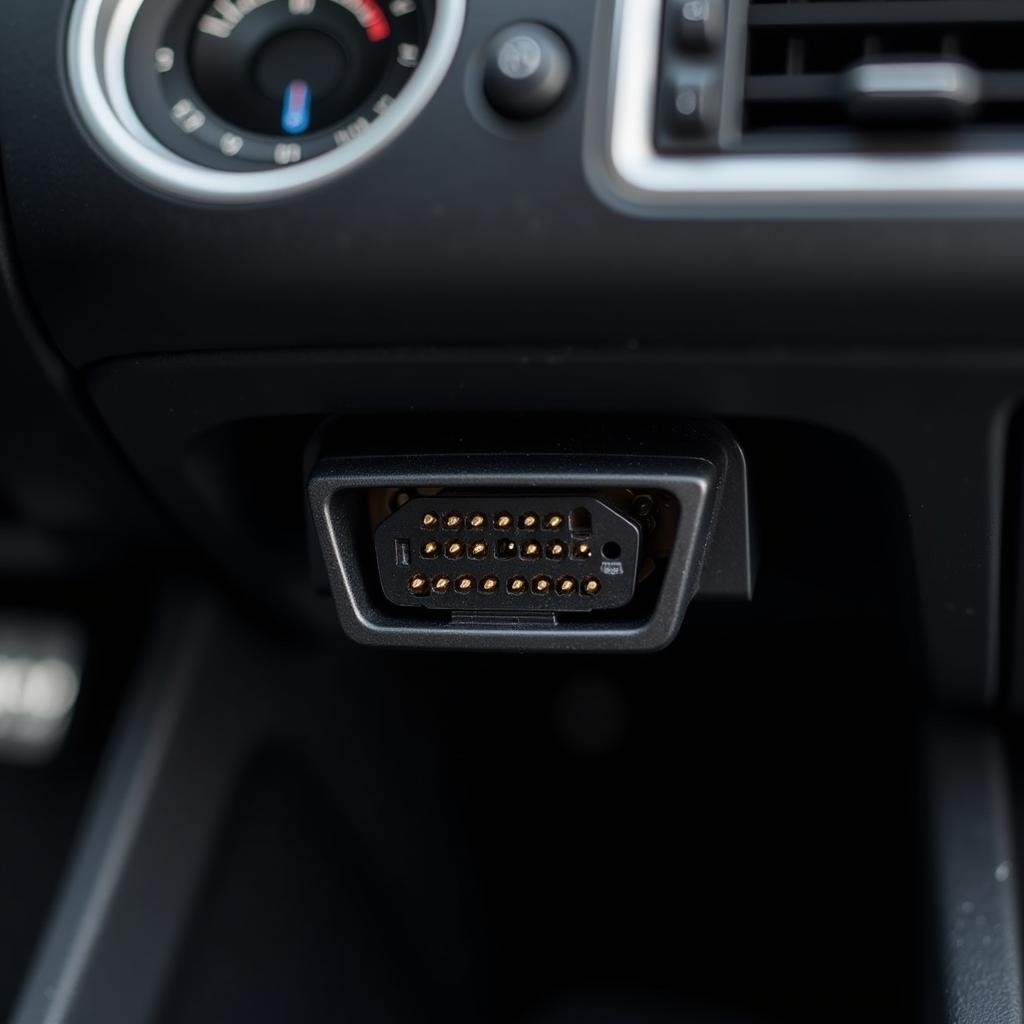How to Put Car in Service Mode: A Step-by-Step Guide
Putting your car in service mode, also known as diagnostic mode, might seem intimidating. However, understanding this process can be incredibly useful, especially if you enjoy DIY car maintenance or want to troubleshoot minor issues before visiting a mechanic.
This comprehensive guide will delve into the intricacies of putting your car in service mode, outlining the reasons, benefits, and potential risks involved.
What Does Putting Your Car in Service Mode Do?
Essentially, service mode allows you to access your car’s onboard computer system. This access enables you to:
- Retrieve Diagnostic Trouble Codes (DTCs): These codes pinpoint the source of issues affecting your car’s performance, such as engine problems, transmission malfunctions, or faulty sensors.
- Run System Tests: Service mode lets you run checks on various systems like airbags, ABS, and emissions control.
- Reset Service Reminders: After completing routine maintenance, you can use service mode to reset the service interval indicator on your dashboard.
 Car Diagnostic Port
Car Diagnostic Port
Is it Safe to Put My Car in Service Mode?
Generally, putting your car in service mode is safe if done correctly. However, it’s crucial to remember that you’re interacting with sensitive electronic systems. Mistakes, like entering incorrect commands, can potentially disrupt your car’s normal functions.
How to Put Your Car in Service Mode: Methods and Precautions
The method for putting your car in service mode varies significantly depending on its make, model, and year. Let’s explore some common methods:
1. Using an OBD-II Scanner:
This is the most common and user-friendly method. Here’s a step-by-step guide:
- Locate your car’s OBD-II port. It’s usually found under the dashboard on the driver’s side.
- Plug the OBD-II scanner into the port.
- Turn the ignition to the “on” position without starting the engine.
- Follow the on-screen prompts of your specific scanner model. You’ll usually find an option to enter “Service Mode” or “Diagnostic Mode.”
2. Using Button Combinations:
Some car manufacturers allow access to service mode through specific button sequences on the dashboard or steering wheel. This method usually involves pressing and holding a combination of buttons while turning the ignition on.
Important: This method is highly vehicle-specific. Consult your car’s owner’s manual for the exact button combination.
 Car Owner's Manual with Service Mode Instructions
Car Owner's Manual with Service Mode Instructions
3. Precautions to Take:
Regardless of the method you use:
- Refer to Your Owner’s Manual: Always prioritize the instructions provided in your car’s manual. It contains the most accurate and safe procedures for your specific vehicle.
- Avoid Guesswork: Entering incorrect commands or button sequences can lead to unexpected consequences. If unsure, seek guidance from your manual or a qualified mechanic.
- Disconnect the Battery (If Necessary): Certain procedures, especially those involving electrical system modifications, might require disconnecting the battery as a safety precaution. Always consult your manual before doing so.
Benefits of Knowing How to Put Your Car in Service Mode
While visiting a mechanic for complex issues is always recommended, familiarizing yourself with putting your car in service mode offers several advantages:
- Early Problem Detection: By retrieving and interpreting DTCs, you can identify potential issues early on, potentially preventing costly repairs down the line.
- Informed Decision Making: Understanding the source of a problem empowers you to make informed decisions about repairs and maintenance. You can research solutions, compare quotes from mechanics, and even consider DIY fixes for minor issues.
- Cost Savings: Early diagnosis and informed decision-making can lead to significant cost savings on car repairs and maintenance.
 Mechanic Using OBD-II Scanner in Garage
Mechanic Using OBD-II Scanner in Garage
Common Situations Where Service Mode is Helpful
- Check Engine Light: If the dreaded “Check Engine” light illuminates on your dashboard, accessing service mode and retrieving the DTC can give you a starting point for diagnosis.
- Airbag Light: A persistent airbag light could indicate a faulty sensor or wiring issue. Service mode allows you to run diagnostics and pinpoint the problem area.
- ABS Light: If your ABS light stays on, it could signify a problem with the Anti-lock Braking System. Service mode helps identify the faulty component.
- Resetting Service Reminders: After performing oil changes or other routine maintenance, you can use service mode to reset the service interval indicator, ensuring accurate reminders for future servicing.
Can You Go to Another Dealership to Get Car Serviced?
If you’re wondering, “[can you go to another dealership to get car serviced](https://carserviceo.com/can-you-go-to-another dealership-to-get-car-serviced/),” the answer is generally yes. You have the flexibility to choose any reputable dealership or qualified mechanic for your car’s maintenance and repairs.
Conclusion
Knowing how to put your car in service mode empowers you with valuable insights into your vehicle’s health. While this guide provides a general overview, it’s essential to consult your car’s owner’s manual and prioritize safety. Understanding the diagnostic capabilities of your car can lead to early problem detection, more informed decision-making, and ultimately, significant cost savings.
Need assistance with your car’s diagnostics or looking for expert advice on car maintenance? Contact us via WhatsApp: +1(641)206-8880 or Email: [email protected]. Our dedicated customer support team is available 24/7 to assist you.

